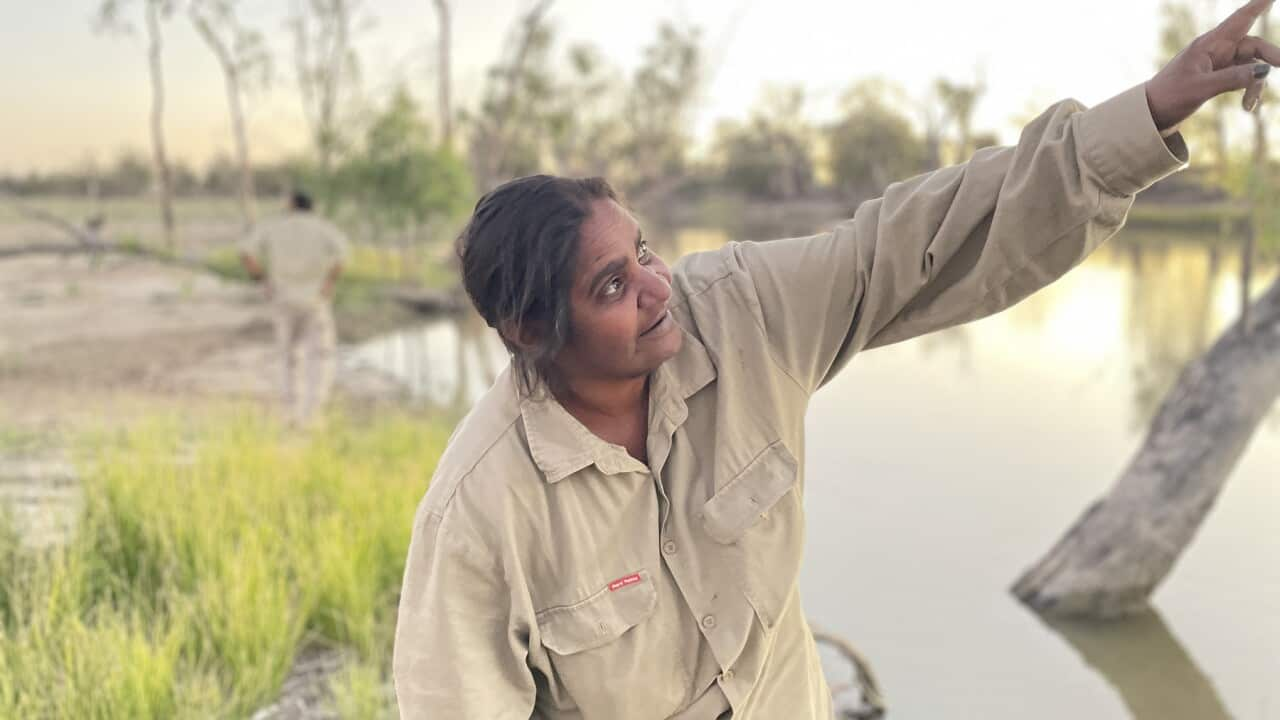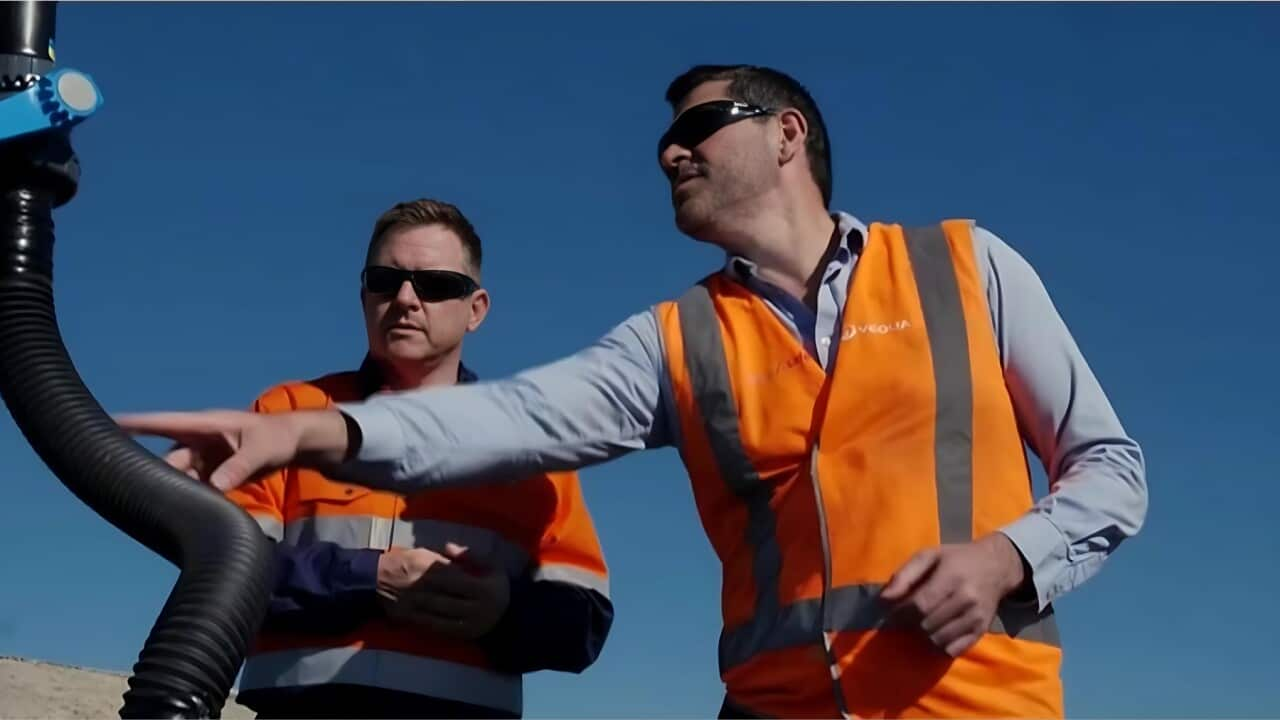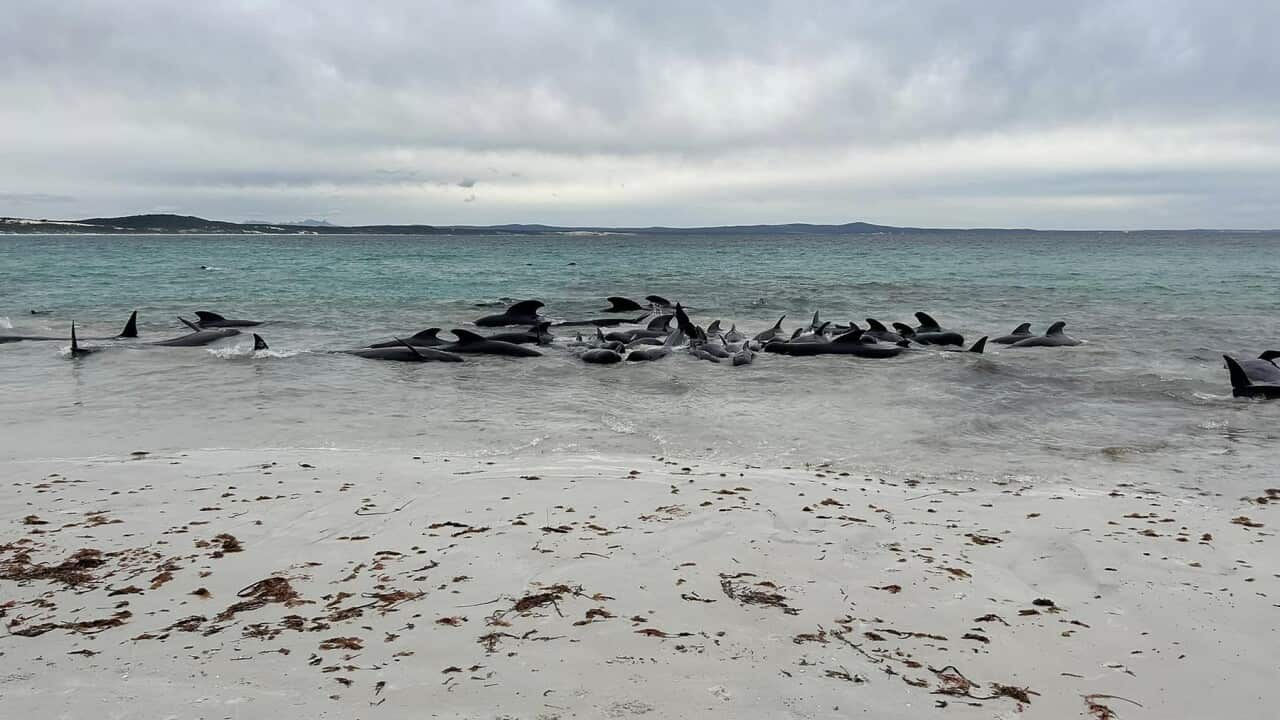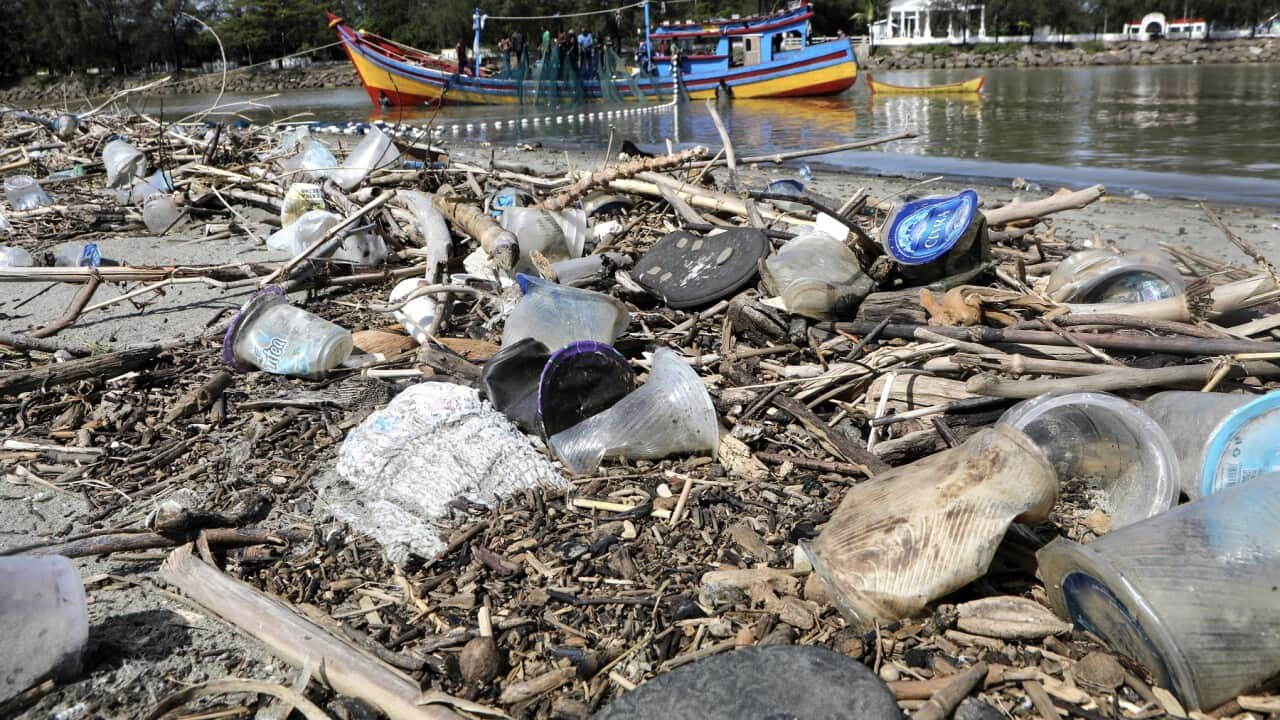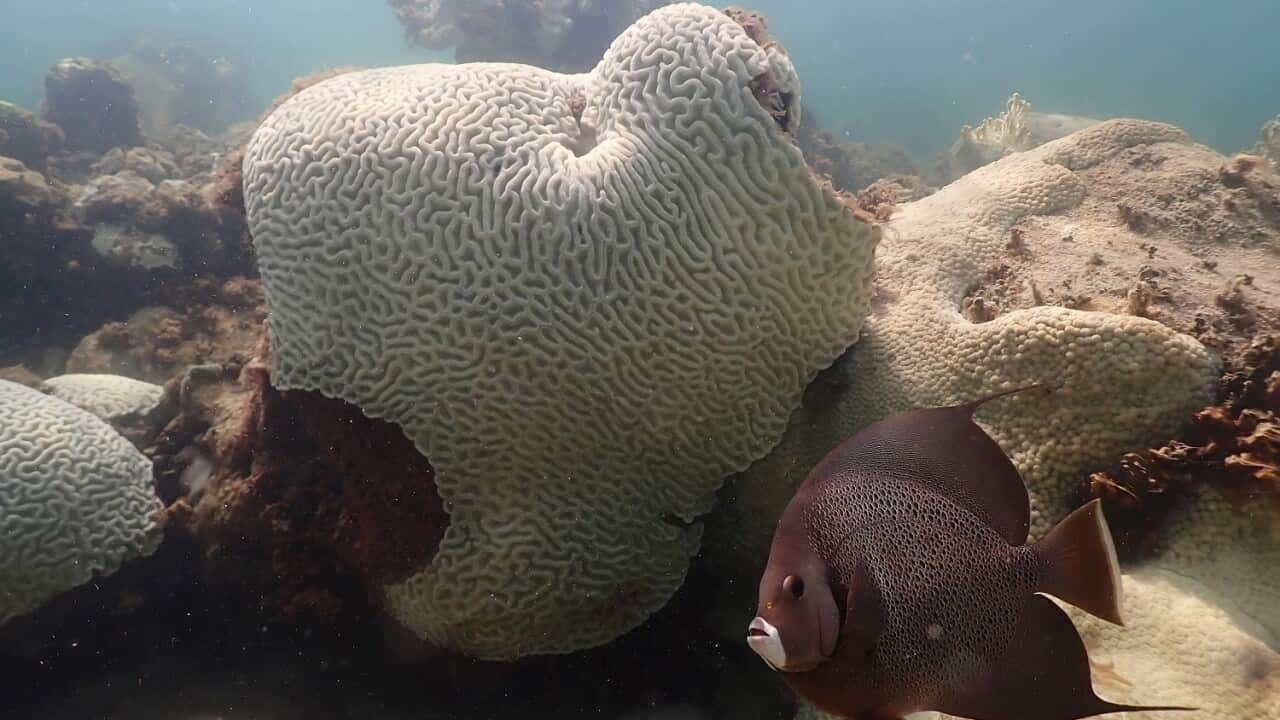TRANSCRIPT:
More than a year after flooding put this arid landscape under water, birds are still enjoying the benefits.
During summer last year only the tree-tops here were visible.
Today rangers Lucy Sumner and Thomas Kurt are edging around the mud on the side of a lagoon.
Indigenous rangers from the River Murray and Mallee Country Corporation are working with ecologists to monitor how the environment is responding to this influx of water.
Lucy Sumner is a senior ranger with the group.
"To me it's like entering another dream time, the start of another Dreamtime, from here and onwards... I have never seen Redfin for about 20 years - and we used to catch this all the time at the River - Renmark riverfront. But when we was doing the fish monitoring out here in the back creeks, the red fins were coming back in abundance. There was collabs, there was silver brims, everything - all the little important fishes. Like the gungeon and all that, they were all coming back in abundance. And like I said, the red fin I'd never seen for a while.. So it was good to see him back in the river.”
It's meant the community can return to cultural practices and eat a diet high in native fish.
"That's our usual food source, and that's more healthy for us than going to a shop. So the more tucker - natural tucker - we can get in from the river, the better for us; our soul, our culture, and our spirit."
Thomas Kurt, another ranger, left the area as a teen - and it looked very different back then.
"When I left we were in the middle of a drought and it was pretty bad. Like they blocked off all of the lakes - Barmera Lake is the one that sits in top of my memory - and it had gotten so bad it was like 20, 30 metres past the jetty, the big cod dying, all of the turtles dying."
When he came back there was water everywhere.
"I think coming back and seeing everything so green and so much water, that was a big a difference then to when I'd spent growing up here because yeah, all of my childhood it was very dry place. Like, not much water, not much rain at all. And then yeah, coming back after all them years and just water like you would not believe. So growing up with the fishing it was pretty depressing; only catching carp and introduced species, whereas now after the flood there's a lot more natives. It's good to see the river so healthy. And with the yabbies too, there seem to be a lot more yabbies.”
Large stretches of salt bush now populate the floodplains.
Lucy Sumner is collecting seeds from a flat top saltbush species.
This salt bush is a favourite foraging food of the eastern regent parrot, recognised nationally as vulnerable.
“This is their favourite food, these little salt bushes. And after the flood it's all just come back. So we're hoping that it will attract the birds in and over time they'll make this their sanctuary."
Both rangers are surprised at how many black box trees are germinating here.
There’s a small forest of seedlings and saplings growing on the pike floodplains - but to survive they'll need regular highwater events.
That’s when water flows above the bank.
SBS visited an ancient box woodland nearby, by boat, at the peak of the flood with tourism operator Tony Sharley.
It was the first decent drink for the trees in decades.
Tony Sharley runs walking tours through the area.
"12 months ago we were in a boat cruising through this box woodland and the water level was right up here to my shoulders, at the tips of these leaves. What an amazing event triggered new life throughout the valley. It's given - it's reinvigorated these box woodlands, the old trees, but it's produced seedling germination, a whole new groundcover across our floodplain, which is the habitat for insects, which is the food for birds."
Vivid greens in the foliage and groundcover show how the water has stimulated an abundance of growth.
These low-lying areas in South Australia’s Riverland rely on regular flooding.
But irrigation in states-upstream has meant these floodplains no longer get the water they need, and Mr Sharley says the flood has shown how much an overbank event can achieve.
"And that's supported a massive bird breeding event. It's supported fish breeding throughout the river valley. And now we're seeing the benefits of that flood. There is life everywhere. There's fish in the river system. But what it's really demonstrated is the value you get from a high river event. And we've got to maintain this environmental watering with water that can get over banks, so we can keep triggering this pulse of life, you know, every two or three years."
